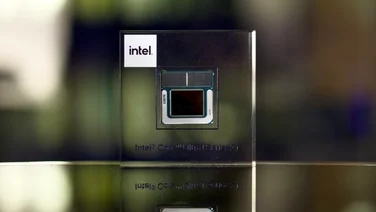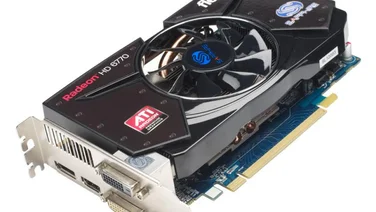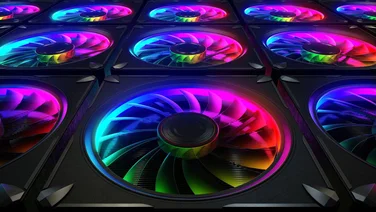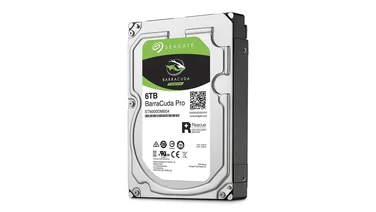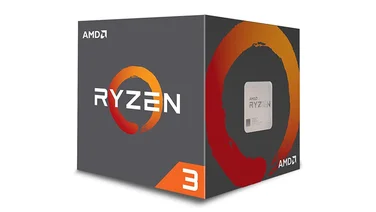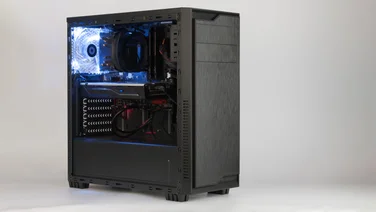To help us provide you with free impartial advice, we may earn a commission if you buy through links on our site. Learn more
- AMD Radeon RX 5700 XT and RX 5700 review: What you need to know
- AMD Radeon RX 5700 XT and RX 5700 review: Price and competition
- AMD Radeon RX 5700 XT and RX 5700 review: RDNA architecture
- AMD Radeon RX 5700 XT and RX 5700 review: Performance
- AMD Radeon RX 5700 XT and RX 5700 review: Temperatures and efficiency
- AMD Radeon RX 5700 XT and RX 5700 review: Verdict











- Both great at 1440p and good at 4K
- Better value than Nvidia counterparts
- Loud reference cooler
- No ray tracing-esque special features
It’s taken seven years and five sub-generations but AMD has finally replaced its creaking Graphics Core Next (GCN) GPU architecture. With the release of both the Radeon RX 5700 XT and the Radeon RX 5700, the vanguard of AMD’s “Navi” family of graphics cards, the new RDNA (Radeon DNA) architecture takes over.
This is, frankly, at least a year overdue. While Nvidia has been wowing with the real-time ray tracing and AI-powered anti-aliasing capabilities of its latest Turing GPUs, AMD has only been able to cough out a couple of underwhelming Vega and Polaris cards: the overpriced Radeon VII and the poorly-timed Radeon RX 590. However, the switch to RDNA finally gives AMD the chance to truly catch up, much as its Ryzen CPUs closed the gap with Intel.
AMD Radeon RX 5700 XT and RX 5700 review: What you need to know
As the debut AMD RDNA cards, the RX 5700 XT and RX 5700 provide our first look at how the 7nm architecture holds up.
Both cards use the same underlying GPU; the RX 5700 XT simply has more of its hardware switched on. That means a higher stream processor (core) count of 2,560 to the RX 5700’s 2,304, and a higher base clock speed of 1,605MHz to 1,465MHz. Maximum boost clock speed is also higher on the RX 5700 XT, although AMD is upfront in that you won’t realistically be able to consistently hold such speeds in games. It, therefore, quotes more attainable “game frequency” speeds as well, which come in at 1,755MHz for the RX 5700 XT and 1,625MHz for the RX 5700.











The RX 5700 XT also has 40 compute units – these are, essentially, clusters of stream processors – while the RX 5700 only has 36. Both have the same 8GB of GDDR6 memory, running at a maximum memory bandwidth of 448GB/sec in both cases.
AMD Radeon RX 5700 XT and RX 5700 review: Price and competition
The £329 RX 5700 XT specifically goes head-to-head with the Nvidia GeForce RTX 2070 – in other words, the affordable high-end market – while the cheaper £290 RX 5700 is more of an analogue to the mid-range GeForce RTX 2060. Only in performance terms, though – both AMD’s cards are significantly cheaper than their Nvidia equivalents. In fact, the RX 5700 XT is launching at the same price as the RTX 2060 did, rather than the pricier and more powerful RTX 2070.











There are also the GTX 1660 and GTX 1660 Ti, although these are largely 1080p-focused GPUs. With the GTX 1660 Ti, in particular, it’s not really worth the £30-odd saving over the RX 5700 when the latter is so much more capable.
Nvidia has attempted to pre-empt the Navi launch by releasing the RTX 2070 Super and RTX 2060 Super, essentially souped-up versions of its existing Turing architecture lineup. However, these are even more expensive than the standard versions, neither of which have received price drops.
READ NEXT: Nvidia Geforce RTX 2060 review
AMD Radeon RX 5700 XT and RX 5700 review: RDNA architecture
It should be noted that, at least conceptually, RDNA doesn’t represent quite as big a jump from GCN variants such as Vega and Polaris as Turing did from Nvidia’s old Pascal architecture. The switch to GDDR6 RAM from HBM2 is one of few changes that are worth mentioning, without getting exceedingly technical. There are no massive, headline-grabbing special features in terms of what these cards can do. Instead, AMD has focused on greatly improving efficiency with the aid of a tiny 7nm manufacturing process, pushing the cards to do more within each clock cycle and boost core gaming performance as a result.











That said, one new tool – Radeon Image Sharpening – is generally worth turning on if you can. It’s a post-processing filter that adds a modest sharpening effect to parts of in-game scenery that might otherwise look soft or blurred. While the performance cost is negligible, though, it doesn’t outright improve performance like Nvidia’s Deep-Learning Super Sampling (DLSS) and, currently, there’s no support for DirectX 11, making an awful lot of games simply incompatible. It’s also not that different to existing sharpening filters available in Nvidia’s Freestyle software and the open-source ReShade tool.
In other words, there’s nothing like ray tracing or DLSS on offer here but since both Nvidia’s tentpole technologies are still somewhat lacking in support from game developers, competitive performance could well be all AMD needs.
AMD Radeon RX 5700 XT and RX 5700 review: Performance
To throw these cards in at the deep end, let’s start with our most difficult benchmark game, Metro: Last Light Redux. Running the Very High quality preset at 1,920 x 1,080 with SSAA enabled, the RX 5700 XT averaged a slick 96fps – 2fps faster than the RTX 2070. It was ahead by the same amount at 2,560 x 1,440, scoring 56fps, while both cards were even at 3,840 x 2,160, with 26fps. The RX 5700 XT still has impressive 4K capability, as switching off SSAA gave us a much smoother 52fps without a clear loss in visual fidelity.

The RX 5700 wasn’t far behind either, scoring 86fps at 1080p, 51fps at 1440p and 23fps at 4K. This third and final resolution isn’t a lost cause, either: switching off SSAA caused the frame rate to precisely double, rising to 46fps. That’s playable enough, although dropping to High quality might be a better choice for 60fps in tough games such as this. Either way, the RX 5700 came out ahead of the more expensive RTX 2060 at all three resolutions.
Next up was Tomb Raider, running at Ultimate quality with FXAA switched on. At 1080p, the RX 5700 XT came within a single frame of the RTX 2070, averaging a fantastic 199fps, but it was at 1440p where AMD’s card got its first big win, with 166fps to the RTX 2070’s 130fps. Sure, at such high frame rates it can get harder to perceive differences but if you’re lucky enough to have a 240Hz monitor then this will help you make the most of it. The RX 5700 XT also won out at 4K, with a more-than-playable 67fps.
Conversely, the RTX 2060 finished slightly faster than the RX 5700 at 1080p, although since the latter managed 168fps, it was only by a negligible 2fps. With 113fps at 1440p and 58fps at 4K, the AMD card retook the lead at higher resolutions and by larger (if still tight) margins.

Dirt: Showdown is becoming ever less useful for testing high-power GPUs, as its heavy reliance on the CPU typically causes bottlenecking once you get to the higher frame rates. With Ultra quality and 4x MSAA, both the RX 5700 XT and RX 5700 scored 111fps at 1080p and 1440 – four tests, the same result every time.
Still, you should get higher than that if you have a better processor than our test PC’s Intel Core i7-4770K, and 4K allows for a lot more headroom. At this resolution, the RX 5700 XT reached 105fps, 5fps higher than the RTX 2070, while the RX 5700 cruised to 97fps, 11fps higher than the RTX 2060.

I haven’t had the chance to test an RTX 2070 Super yet and my only reference for the RTX 2060 Super is the PC Specialist Inferno R1 pre-built PC, which has a much newer and gaming-friendly CPU in the Ryzen 5 3600X. Nonetheless, Nvidia’s latest mid-ranger doesn’t seem to outpace the RX 5700 by much – only by 2fps to 3fps in Metro, even with its unfair CPU advantage, and the RX 5700 actually did better in 4K Dirt by 3fps. I’ll wait to get the RTX 2060 Super into our testing rig before making any final conclusions but first impressions suggest the two cards are even, despite the RX 5700 being £89 cheaper.
Lastly, both the RX 5700 XT and RX 5700 attained a perfect score of 11 in the SteamVR Performance Test. These cards will, therefore, run any VR game on the market at high quality for 90fps or higher. This does, however, bring us onto a certain oddity: despite AMD being a member of the VirtualLink Consortium, an organisation promoting the VirtualLink connectivity standard for VR headsets, there’s no VirtualLink port on either Navi reference design.

To make things weirder, the RDNA architecture has VirtualLink support built-in. AMD has simply chosen not to enable it. That at least opens the possibility for new partner card models adding the connector but it’s a shame to miss out if you buy the reference design, especially since VirtualLink can act as a versatile USB Type-C port, even if you don’t care for VR.
In any event, the RX 5700 XT finally delivers something we haven’t really seen since the GTX 1070: a fully 4K-ready graphics card for less than £400. That’s not to forget about the RX 5700, either. If anything, it’s an even better deal if you’re only concerned about the price-to-performance ratio. It repeatedly comes within a few scant frames of its bigger brother and can itself handle 4K, although it arguably makes more sense as a 1440p powerhouse.
AMD Radeon RX 5700 XT and RX 5700 review: Temperatures and efficiency
If there’s a catch, besides the lack of ray tracing and DLSS-style features, it’s the coolers on these cards’ reference designs. They’re noisy, for one thing: using a decibel meter from a distance of 15cm, I measured the RX 5700 XT whirring away as loudly as 53dB, while the RX 5700 was slightly quieter at 51dB. This is only an issue when playing games at full whack but it could still get distracting without headphones or some robust desktop speakers.
In the RX 5700 XT’s case, the cooler isn’t even that great at cooling. Idle temperatures sat at a high 60°C, with the GPU hanging around 80°C under load and peaking at 82°C. Other than a very slightly higher idle temperature of 62°C, the RX 5700 displayed a lower load temperature of 76°C and a peak of 77°C. A benefit, perhaps, of having fewer processor clusters stuffed together.











The RX 5700 is more frugal with power, too. I recorded it rising to 150W of power usage when running games, and basically staying there, whereas the RX 5700 XT generally stuck around the 180W mark with occasional jumps all the way up to 212W.
Luckily, partner cards with custom coolers are on the way so, with any luck, you’ll have a choice of designs that have all the reference models’ cost-efficient performance with quieter, more thermal-efficient fans.
READ NEXT: Nvidia Geforce GTX 1660 and 1660 Ti review
AMD Radeon RX 5700 XT and RX 5700 review: Verdict
Then again, you could buy either of these cards tomorrow, and you’d still have a great GPU. As attractive as DLSS and ray tracing can be, the fact remains that they just aren’t well-supported close to a year after launch. The RDNA architecture may be less flashy than Turing but it convinces where it matters most: straight frames-per-second in games.











On these terms, the RX 5700 XT and RX 5700 either equal or surpass their closest Nvidia rivals, while being far more affordable than the new Super variants, which don’t look to be particularly more powerful anyway.
Consequently, the RX 5700 XT is an excellent choice if you want smooth 4K for relatively little cash and the RX 5700 is nearly perfect for lower resolutions. These are AMD’s two best graphics cards in years, and it will be exciting to see what happens when RDNA inevitably takes on Nvidia’s top guns: the RTX 2080 and RTX 2080 Ti.

